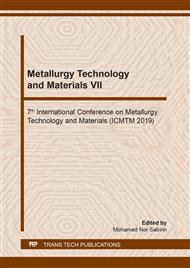p.161
p.167
p.175
p.181
p.186
p.197
p.202
p.208
p.214
Photoluminescence from Suspended and Supported Graphene
Abstract:
The thermal conductivity of suspended graphene varies greatly under light, but the thermal conductivity of supported graphene does not change as much as that of suspended graphene. This is due to the fact that all of the loaded graphene is placed on the substrate and the thermal diffusivity of the loaded graphene is very good. In this paper, the ultrafast properties of supported graphene and suspended graphene have been studied. Suspended graphene has unique thermal conductivity, and its thermal conductivity will change greatly with the increase of temperature. Because of graphene has no band gap, the photon emission of supported graphene cannot be realized by electron hole recombination as in direct band gap materials. Optical emission of hot carriers is possible in graphene, but usually inefficient. That’s because most materials have much faster thermal carrier relaxation time than radiation lifetime. Herein, the hot carrier emission of suspended graphene and supported graphene are studied by femtosecond laser. It is found that the hot carrier can reduce the relaxation time of hot carrier in suspended structure. The suspension structure does increase the intensity of photon emission.
Info:
Periodical:
Pages:
197-201
Citation:
Online since:
October 2019
Authors:
Keywords:
Price:
Сopyright:
© 2019 Trans Tech Publications Ltd. All Rights Reserved
Share:
Citation:


